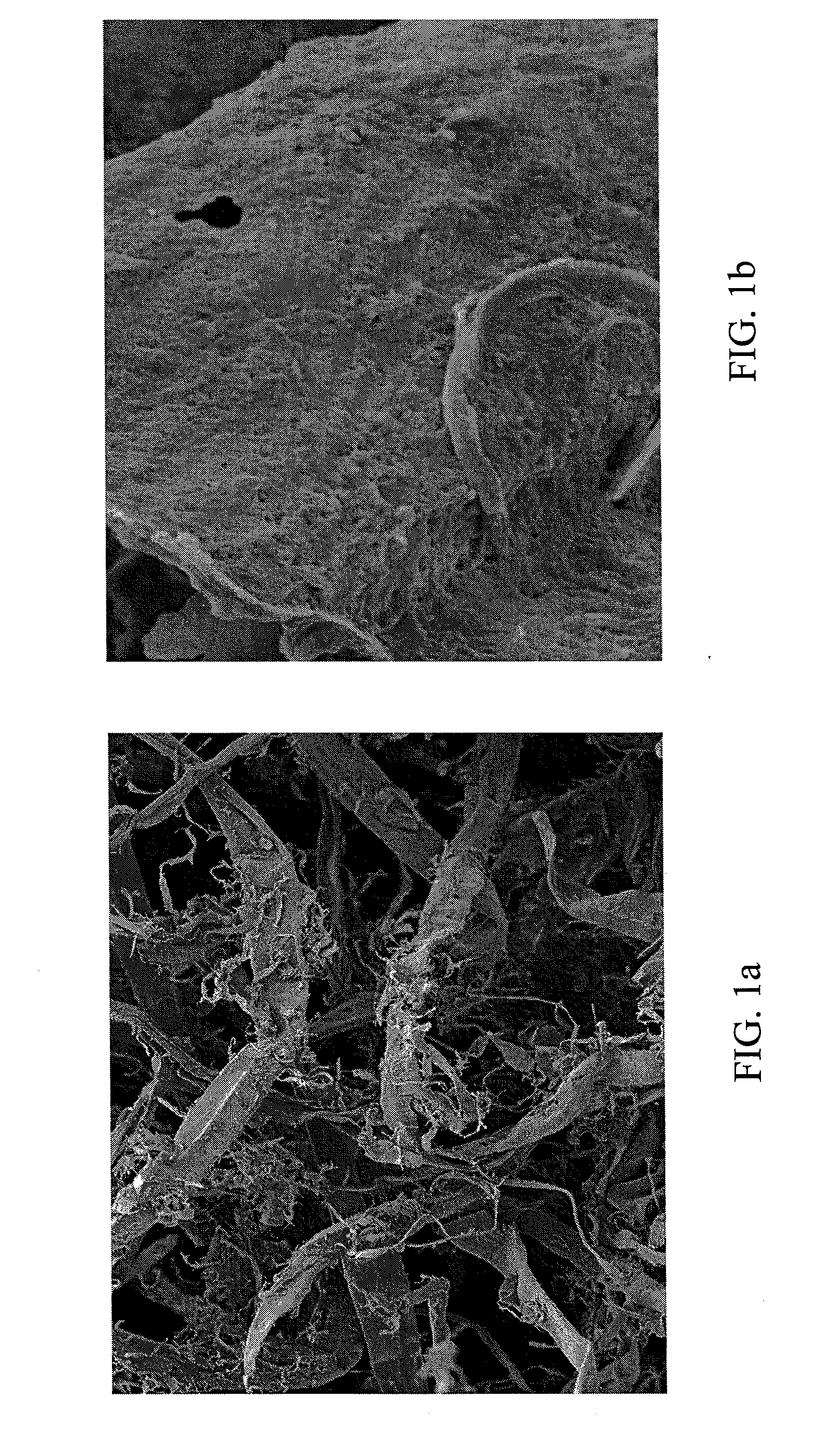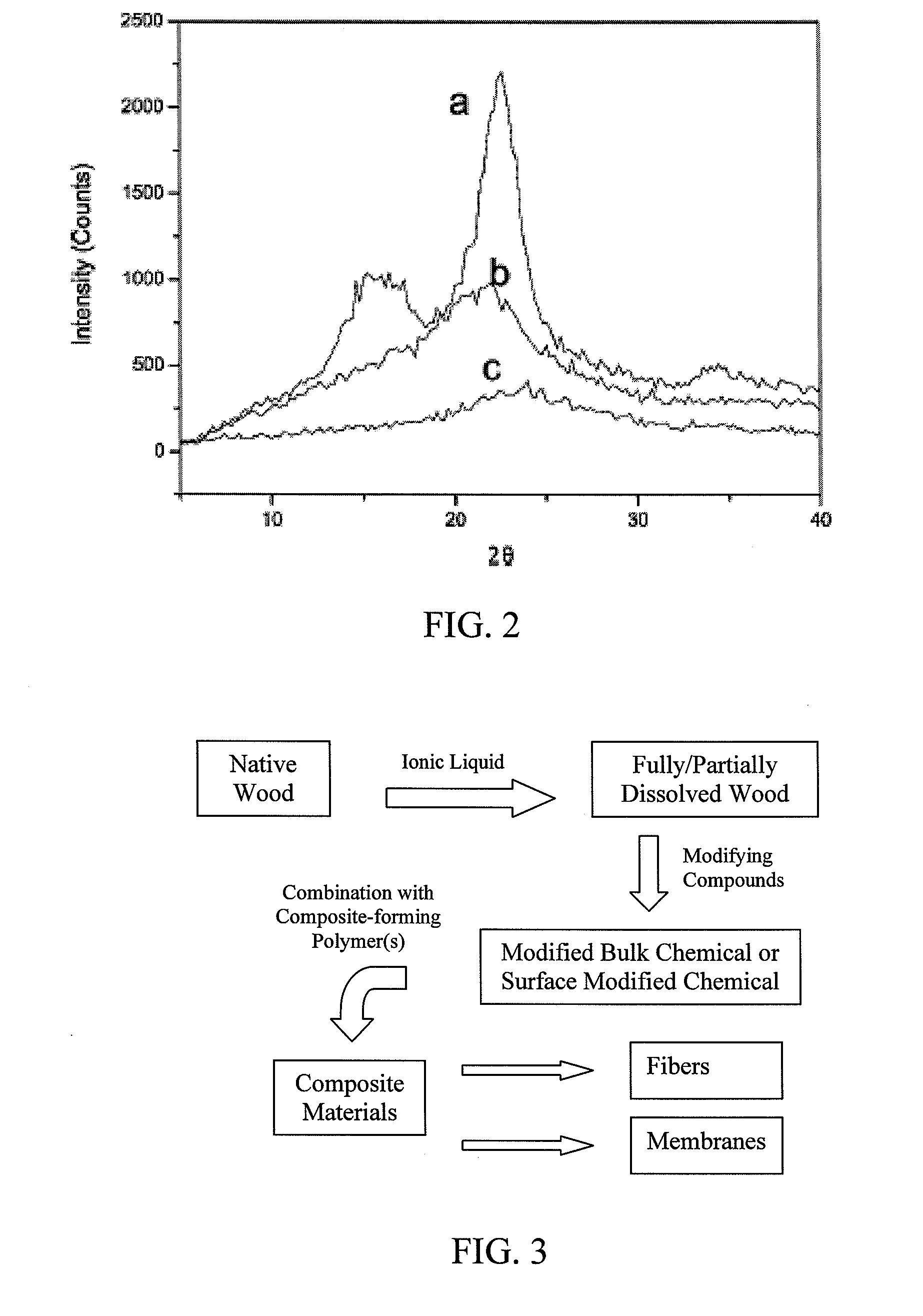Polymer derivatives and composites from the dissolution of lignocellulosics in ionic liquids
a technology of lignocellulosics and polymer derivatives, which is applied in the field of composite materials, can solve the problems of unavoidable consumption of large amounts of energy and expensive chemicals, low efficiency and utilization of hazardous chemicals, and undesirable preliminary treatments, and achieve the effect of effective utilization of wood
- Summary
- Abstract
- Description
- Claims
- Application Information
AI Technical Summary
Benefits of technology
Problems solved by technology
Method used
Image
Examples
example 1
Preparation of Spruce Membrane Materials
[0132]A solution of 8% by wt. Spruce wood thermomechanical pulp (TMP) in ionic liquid (1-butyl-3-methyl imidazolium chloride) was prepared by combining the components and mechanically stirring at 110° C. over an 8 hour time period. The obtained solution was kept under vacuum in order to remove air bubbles. Films were produced using coating rods forming a uniform membrane of Spruce wood / ionic liquid on a glass plate. Once the films were produced the ionic liquid was gently removed using water flow. After washing the films with water, they were allowed to dry in a vacuum oven at room temperature. As the water was evaporated the films began to shrink forming a hardened uniform membrane.
example 2
Pine TMP / Tonic Liquid Composite Material
[0133]A solution of 5% by wt. Pine TMP was prepared in an ionic liquid formed using 1-allyl-3-methyl imidazolium chloride and formed into a film according to the method of Example 1. After the Pine / ionic liquids film was cast on the glass plate the plate was immersed into ethanol for 5 minutes and the ionic liquid present on the surface of the membrane was washed away with water.
example 3
Spruce TMP / PVA Blend
[0134]A solution of 5% by wt. spruce TMP with polyvinyl alcohol (PVA) (Spruce TMP / PVA=20 / 80, 40 / 60, 60 / 40; PVA MW=15,000) was prepared using 1-butyl-3-methyl imidazolium chloride ionic liquid. Dissolution was achieved with the addition of Spruce and PVA in suitable proportions at 130° C. over a period of 8 hours with stirring. The blended solutions were allowed to cool and coagulate as membranes using methanol. Then the films were placed in a methanol bath and allowed to soak for 24 h, in order to allow for a maximum amount of ionic liquid to diffuse out of the blended composite. The composites were dried in an oven set at 45° C. for 24 h.
PUM
| Property | Measurement | Unit |
|---|---|---|
| temperatures | aaaaa | aaaaa |
| temperatures | aaaaa | aaaaa |
| temperatures | aaaaa | aaaaa |
Abstract
Description
Claims
Application Information
 Login to View More
Login to View More - R&D
- Intellectual Property
- Life Sciences
- Materials
- Tech Scout
- Unparalleled Data Quality
- Higher Quality Content
- 60% Fewer Hallucinations
Browse by: Latest US Patents, China's latest patents, Technical Efficacy Thesaurus, Application Domain, Technology Topic, Popular Technical Reports.
© 2025 PatSnap. All rights reserved.Legal|Privacy policy|Modern Slavery Act Transparency Statement|Sitemap|About US| Contact US: help@patsnap.com



